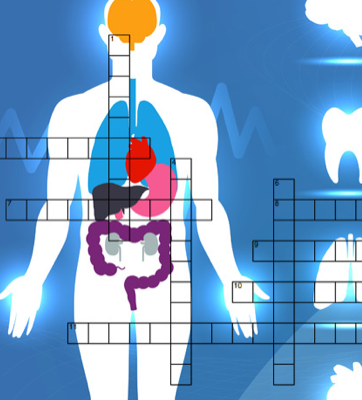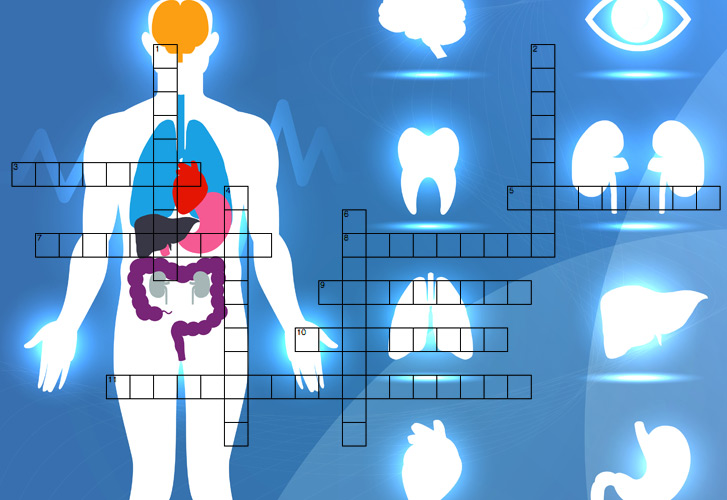Key Concepts in Biological Systems – Crossword

Relating the Small to the Big: The Human Biological System
Structures
- whole organism (big)
- organ systems
- organs
- tissues
- cells
- organelles (small)
Terms to Know
- Metabolism: all of the chemical reactions which maintain life, which can be subcategorized as catabolism (breaking down molecules to get energy) and anabolism (synthesizing, or making, needed compounds).
- Nutrition: how you get the nutrients you need to function and live. The digestive system gets us the nutrients we need out of the foods we eat.
- Transport: how you absorb and distribute substances needed to sustain life as well as waste materials and harmful substances. The lymphatic systems and circulatory systems are transport systems in our body.
- Respiration: how we go from food → energy. The respiratory system gets us oxygen out of the air we breathe. Within our cells, cellular respiration occurs and the oxygen we breathe combines with compounds from the foods we eat to generate energy & water.
- Excretion: how we get rid of waste. We breathe out CO2, so our lungs help us get rid of waste. We sweat out other waste products. Our kidneys also filter our blood to remove waste materials and keep the good stuff. The liver also helps us get rid of old red blood cells.
- Regulation: the control & coordination of life functions. The nervous system and the endocrine system help regulate and coordinate the functions of our body.
- Locomotion: how you move. Bones & muscles, and the nervous system accomplish locomotion.
- Dynamic Equilibrium: “Dynamic” as is constantly changing and “equilibrium” as in constantly balanced. Things are constantly changing in our bodies and yet our bodies must constantly balance its internal environment. Compensations and adjustments are made so that the internal state is always the same.
- Ingestion: taking in nutrients.
- Digestion: the use of mechanical and/or chemical processes to break complex foods down into smaller forms that can be used by our bodies.
- Egestion: how we get rid of undigested food. Note that this is different from excretion above.
Key Concepts for Biological Systems
Molecules and atoms that are important to living creatures (water, oxygen, and so forth) are reused and recycled from the environment and other organisms. The biochemical processes that living organisms orchestrate are dependent on energy sources and raw materials. Life itself is dependent on energy sources and raw materials.
An organism must maintain its internal environment within certain limits. Keeping itself in a “steady state” is referred to as homeostasis. There are feedback mechanisms that detect deviations and kick in order to return to the desired normal state.
Dynamic Equilibrium is achieved by detecting and responding to stimuli. An organism may respond to a change on a cellular level or on a larger scale, such as by one of the major body systems.
The primary source of all energy comes from the sun. Energy can be stored in chemical bonds such as those found in glucose. This energy is released during cellular respiration.

